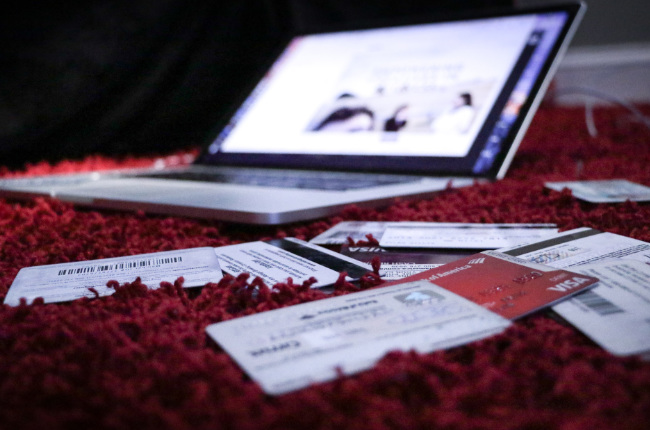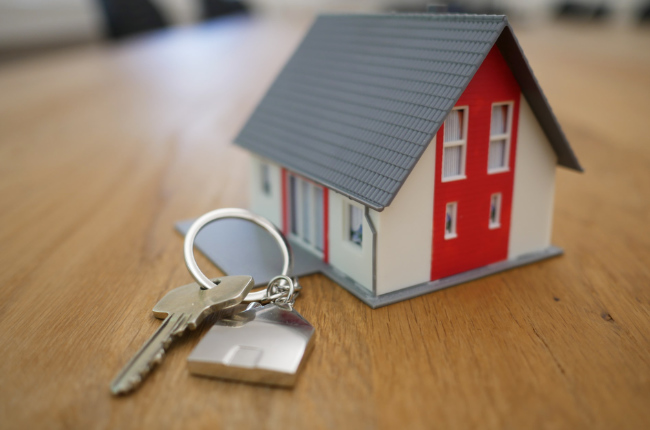This might surprise you, but Jase, Jono and Greg are closet bookworms. In fact, a team favourite here at RBK is The Barefoot Investor by Scott Pape.
Out of curiosity, you might be wondering where the name ‘barefoot investor’ came from? Pape has commented saying that the name is simply to reflect his childhood upbringing, living in a rural area alongside his father. Even though he went on to become a stockbroker in Melbourne, he has never forgotten where he came from.
In his book, Pape outlines his nine steps to securing financial freedom in an incredibly approachable way. And as we love it so much, we’ve decided to cover the basics of the steps for the ultimate summary anyone can easily follow.
Monthly Date Nights

Book them in with your partner, or yourself – now. Date nights are the perfect way to track how your financial goals are going and if you’re sticking to the steps. Make it enjoyable by reviewing everything over a glass of wine and some delicious food. You might want to try a new place each month, but remember to keep it fun and something you look forward to. So much nicer than those crappy after work convos at home!
Everyone should be aware of their financial situation. This means both parties in a relationship too. If one or both of you isn’t there yet, monthly date nights are a great way to start the discussion.
Start looking at things such as the fees you’re paying on your everyday accounts and your super fund. You should be paying zero bank account fees, and if you are being charged, then switch to a new bank ASAP. Consider opening a new account, which Pape calls the Mojo Bucket. Work towards getting $2000 in there and save it for a rainy day. Having that money put away will take a lot of stress out of managing your financials.
Reviewing your super fund is also important. Compare fees and check what your fund invests in. If you’re unsure about how to approach this area, we can help with superannuation and guide you in the right direction. Pape also suggests looking at your insurances as well. Are you covered for everything you need? If you aren’t aware of what’s available or necessary to your situation, we can give you a hand here too.
Set Up Your Barefoot Buckets (Accounts)

This next step is based on Pape’s ‘Serviette Strategy’, which he wanted to make so simple that he was able to write it out on the back of a serviette, hence where the name came from. The idea is simple and straightforward: set up buckets (accounts) that will plan where your incoming money will go.
The book makes setting up the buckets easy for you, but basically, this is how you should be allocating your income each pay:
- 60% to your Blow Bucket
- 20% to your Fire Extinguisher Bucket
- 10% to your Splurge Bucket
- 10% to your Smile Bucket
The Blow Bucket is for your everyday expenses such as rent or home loan repayments, food, phone bill, internet bill, insurances and utilities.
The Fire Extinguisher Bucket is for big savings goals too, but more towards less fun things like saving for a house deposit or paying off your mortgage faster. It can also be used for paying off debts.
The Splurge Bucket is for cash to spend on things that make you feel great like new clothes, electronics, appliances and your social life.
The Smile Bucket is for fun longer-term savings goals such as a wedding, honeymoon or a holiday.
When it comes to setting up your bank accounts, the Barefoot Investor has recommended looking into banks such as 86400 (Australia’s first smartbank), ING, Ubank, Me Bank and Up Bank.
Domino Your Debts

In this step, The Barefoot Investor says you need to tackle your debts. Make sure you write them down and include the interest rates next to each one. To help you pay off your debts easier, figure out if you can negotiate better rates with the current lender or move to another one who will offer you cuts.
List your debts in order from smallest to biggest, and then start by paying off the smallest debt. This will give you the feeling like you’re making great progress and will build momentum in reaching and paying off those bigger debts.
To do this, Pape recommends organising your debt into five domino blocks that will then be knocked down as you complete each step. Here’s a quick breakdown of each domino:
Domino 1 (Calculate)
Before you initiate your plan of attack to crush your debt, you need to know what you’re working with – and that’s exactly what this first step involves.
Calculate all the current debts you have by writing them down or creating a spreadsheet on your laptop (as accountants, we love spreadsheets). This can include credit cards, outstanding fines or loan repayments such as for your car or electronics – basically, any amount of money you owe.
Domino 2 (Negotiate)
Once you have your first domino lined up, it’s time for the next one: negotiating your larger debt repayments.
With your statements in one hand and your phone in the other, the Barefoot Investor recommends calling your bank and trying to negotiate a lower rate on your credit card repayments and loans – hard. If your bank won’t play ball or puts up stiff resistance, which they most likely will, Pape says to let them know you’ve been offered a better deal at another bank.
You can tell them that another bank has offered you a deal such as no application, transfer or ongoing fees with a 0% balance transfer for the first 18 months. Even though your bank most likely won’t be able to match it, the chances are high that they will instead counter the offer by offering to lower the rate on your current deal.
Keeping customers is always cheaper than acquiring new ones, and banks are fully aware of this.
Domino 3 (Eliminate)
This step is all about eliminating temptation. Grab a pair of scissors and start cutting up all of your credit cards. This physical act is a symbol of freeing yourself from debt and moving forward into a debt-free future.
Domino 4 (Detonate)
This next step involves arranging your debt list in order of smallest to largest, and focusing your attention on tackling the smaller debts. By knocking off your smaller debts, you will get a huge boost of morale and confidence.
Start with your smallest debt first, which could be something as tiny as owing $5 to your mate who shouted you a coffee at work. By tackling the smallest debt first and then working your way up your list, you will gain momentum towards attacking the larger debts.
While this will make paying off your other debts more manageable, it’s crucial to remember that you must always pay the minimum monthly repayments on all your existing debts. Receiving letters and phone calls from determined debt collectors isn’t going to make your journey towards becoming debt-free any easier.
Domino 5 (Celebrate)
This last step is pretty self-explanatory: celebrate!
Once your smallest debt is paid, such as a loan repayment, it’s very therapeutic to celebrate. This can involve grabbing your final repayment bill and setting it on fire in the sink – or just simply throwing it in the bin.
Every win needs to be celebrated, no matter how small. This is essential to keeping the momentum going and keeping you focused and on track to eliminating all your debts. But remember to strike while the iron is hot!
Keep going and focus your attention on tackling the next debt, lining up the dominos and then knocking them down. With each domino you knock down, you will gain back control over your situation.
Buy Your Home

Pape reckons that despite the smashed avo and $4 coffee epidemic, buying your own home is still very much achievable in this market. He also reckons you can do it in 20 months.
Firstly, let’s quickly go through the top mistakes people are making when trying to buy a house:
- Waiting for a housing market crash (don’t plan your life around things you can’t control).
- Buying a home they can’t afford.
- Buying an investment property first.
- Renting rather than buying – but forgetting to save while they’re doing it.
- Don’t consider other options (for example, moving into an apartment in the city or moving to the country).
Which of these are you guilty of?
Next, the hardest part: how to save for a deposit. Look back at step two and you’ll see where we discussed the Fire Extinguisher Bucket. It’s time to use that cash.
Pape believes you will need a 20% deposit for a home deposit. Not only will this prove you can save but you will also avoid LMI (Lenders Mortgage Insurance), which can cost tens of thousands over the life of your loan. This results in your hard-earned money going down the drain for no good reason.
Pape then talks about how to get your deposit quicker. The average income earner in Australia can bring home $5000 net a month. A couple that can learn to live off one salary for 20 months can save around $100,000. However, everyone’s circumstances are different, so don’t set up impossible savings targets that cannot be sustained in the long run. It’s vital to be realistic in order to see the best results.
Pro tip: Borrow less than what the bank will lend you and your repayments should be less than 30% of your take-home pay.
Supercharge Your Wealth

In this step, Pape talks about whether you should be buying an investment property. We recommend picking up the book to read about the pros and cons of this one.
Next, the ‘M’ word pops up; Millionaire! Wouldn’t it be nice? Pape says a great leg up towards the dream is to boost your super to 15% each year. As your employer is already putting in 9.5%, all you need to do is increase it by 5.5%. Not only is this a great tax saving (speak to us about how), but it helps you save towards a much more comfortable lifestyle for when you retire.
A great example Pape uses is someone at age 30 who earns $72,000 and has $50,000 already in super. If they put super contributions on autopilot and contribute a total of 15% of their salary, that’s an extra $330 per month getting contributed to their super fund.
By the time that person is 67, assuming the growth rate is 8% and inflation is 2%, they will have $569,073 more in their super fund than if they didn’t put that extra 5.5% in. When they retire, they would be on track to walk away with $2,063,179. It’s a no-brainer!
Boost Your Mojo to Three Months

Looking back at step one, we spoke about the Mojo Bucket and depositing $2000 into the account. If you’ve followed all the steps so far, then you’ve made great headway on saving for that house deposit.
In step six, Pape wants you to save towards three months of Mojo money so that you’ve got $6k securely stashed away. If you can get to this point and achieve the other five steps, then you’ll be well on your way to never having that awful ‘I’m worried about money’ feeling again.
Having savings has been shown to have a direct link to happiness – and we believe it! As always, we’re here to lend a hand if you need help with any of the above. Being financially free is the ultimate goal for all our clients.
Get The Banker Off Your Back

Pape’s main message here is to shake the norm and start saving tens of thousands of dollars while paying off your mortgage faster. There are two ways to go about it, and he wants you to do both; lower your interest rate and make extra repayments.
Here’s a good example that shows how you could save well over $70k and wipe almost seven years off your mortgage with three simple rules:
Rule 1: Keep it simple
A home loan is a simple process: you borrow money from the bank and then repay them, with interest, over the next 25-30 years. Don’t fall for any of the extras you can get in your home loan package. Keep it simple and stay away from fixing a portion of your loan or getting repayment holidays.
Rule 2: Don’t fix your rate
Make a promise to yourself to stick to the lowest variable rate you can find – regardless of what you may hear in the lunchroom.
Pape’s example is when a mate tells you they got a great deal on a fixed rate (lower than the current variable rate) and it’s locked for five years. Banks offer this so-called “fantastic deal” because since the government has banned exit fees, they had to find other ways to stop customers from switching to better deals.
Locking into a fixed-rate loan gives the power back to the banks and you’ll be hit with a “break free” that can cost you thousands if you ever want to leave or refinance.
Rule 3: Get the cheapest rate possible
Pape reckons it’s easier to complain to your current bank about rates than switching to another, and we think so too! It costs a bank roughly $1000 on marketing costs to replace you and more if you come via a mortgage broker as they pay kickbacks. In the book, this rule comes with specific instructions from Pape on how to script your phone call (which can save you $22k on your loan based on a mortgage of $400k over 18 years at 4%).
Ring your bank and threaten to refinance with someone else such as UBank or ING unless they drop their rate. Stay firm and if they say no, stick to your word and change banks, or call back again and try another day. If they still say no and you have more than 20% equity in your home (so you don’t get hit with Lenders Mortgage Insurance if you leave), say goodbye and lower your interest rate elsewhere. Alternatively, you can reach out to us about our mortgage broking services and we’ll help with getting you a better rate.
Now for the second part: making extra payments to your home loan. If you’ve been following these steps, then you’ll have money in your “Fire Extinguisher” account. With its help, if you can pay an extra $1000 per month on top of your minimum repayments, along with getting a cheaper interest rate, you’ll save around $77k in interest and wipe almost seven years off your mortgage (based on a $400k mortgage over eighteen years).
Nail Your Retirement Number

Pape wants you to follow his “Donald Bradman Retirement Strategy”. He reckons you don’t need a million dollars in your super fund to retire, but at a minimum, you need to have your home paid off. On top of this, you’ll need $170k in your super if you’re single or $250k if you have a partner. Make this your retirement number to nail before you even consider retiring.
The ASFA (Association of Superannuation Funds of Australia) reports that in order to live comfortably in retirement, you will need $59k per year as a couple or $43k per year as a single person. So, how can you make Pape’s strategy work? Well, here’s where Bradman comes in.
Rule 1: Get the banker off your back again
This game plan only works if you retire debt-free. The age pension doesn’t consider the value of your family home, so make sure that your mortgage is completely paid off before retirement.
Rule 2: Nail your number
As we mentioned above: no retiring until $170k (single person) or $250k (couples) is in your super fund. The reason for these figures is that they are the maximum you can have in there whilst still being able to receive the maximum pension ($34,252.40 for couples per year and $22,721.40 for singles per year).
On top of that, you can withdraw $12,500 tax-free from your superfund annually. You can use this money for wise investments, which Pape explains further in the book, and end up with just shy of $60k per year.
Rule 3: Never, ever retire
It sounds like Pape will be working until he’s 95. He suggests working even one day a week or doing a job like Uber to keep you active. The Government allows retirees to earn $28,974 each year, tax-free, without affecting their pension. For singles, it’s $32,279.
To summarise your position
- You’ve paid off your home.
- You’re getting the age pension of $34,252.40 per couple or $22,721.40 per single, and $12,500 from super.
- You and your partner are still earning $20,000, tax-free. It means you’ll have $66,752 in your pockets every year, which is $8000 more than you need from a comfortable retirement.
There’s more to this strategy, which is why we highly recommend you read The Barefoot Investor.
Obviously, retirement planning heavily depends on your personal situation, so if it sounds like something you want to get on top of now, our financial planning services will make sure this is the right strategy for you.
So, what superfund does the Barefoot Investor recommend? Well, Pape hasn’t ‘officially’ recommended any super funds simply due to legal concerns, but he does suggest looking into companies such as SunSuper, Rest, AustralianSuper, VisionSuper and Hostplus, which he and his family use their Indexed Balanced Fund.
Leave a Legacy

If you’ve followed all of the steps right up until this one, you are on the road to securing your financial freedom. But how will you be remembered though?
In this final step, Pape wants you to consider the difference you could make in other people’s lives now that you’re in a financially stable position. Consider giving away some money and time to those less fortunate. You could even make micro-loans to some of the world’s poorest entrepreneurs. Think about what you stand for and how you can pay something back to the community.
And you’ve done it! All nine of the barefoot steps are complete! We hope this summary has given you an insight into setting yourself up financially and made it feel more doable than it did before. As always, we’re here for further advice or to chat about any of Pape’s points, so feel free to contact us and discuss your current financial situation and goals for the future.













